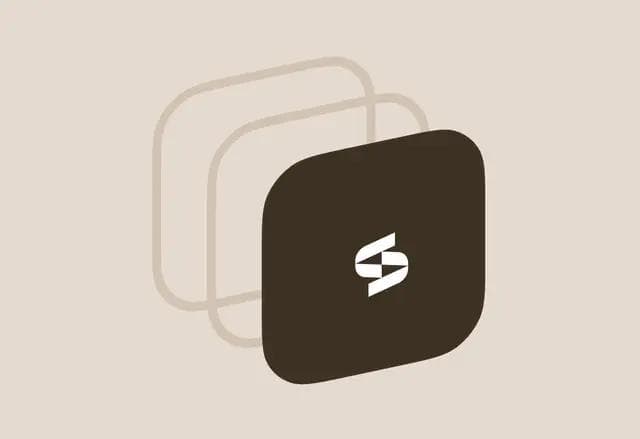It's no secret: cybersecurity teams everywhere are stretched thin.
But few areas are feeling the pressure like Identity and Access Management (IAM).
A recent ISC2 study found that 67% of organizations have cybersecurity staffing shortages, with IAM being one of the hardest functions to staff. Skilled IAM professionals are scarce, and competition for them is fierce.
This has major implications for your identity strategy. Because when your IAM program relies on manual workflows for provisioning, deprovisioning, and access reviews, especially for disconnected apps, you're burning your most valuable resource: time from a team you can't easily replace.
And it's creating a hidden liability that many security budgets overlook.
Manual IAM workflows don't scale in a talent shortage
Okta has become the backbone of identity for modern IT teams. And rightly so: it automates identity workflows beautifully across apps that support SAML, OIDC, and SCIM.
But what about the apps that don't?
Disconnected apps (those that don't integrate with Okta or your IdP) force teams to fall back on manual processes:
- Manually provisioning accounts via email or CSV
- Tracking contract dates and revoking access manually
- Performing quarterly access reviews in spreadsheets
These tasks are not only tedious, they're dangerous when errors slip through. But more importantly, they consume bandwidth your lean IAM team simply doesn't have.
In a world where IAM talent is scarce, this is no longer sustainable.
Disconnected apps are widening the identity blind spot
Disconnected apps go by many names: non-federated apps, manual deprovisioning apps, apps decoupled from the identity fabric, out-of-band tools, or simply apps unlinked to the source of truth.
No matter what you call them, they share the same traits:
- No SSO or federated login
- No SCIM provisioning support
- No connection to your HRIS or IdP
- No automation for user lifecycle management
The result? They sit outside your governance model, and your overworked IAM team must fill the gaps manually.
These gaps are growing as organizations adopt more SaaS applications, many of which fall outside centralized IT governance.
Each disconnected app creates new friction for your already-stretched security team.
The rising cost of manual IAM operations
Every disconnected app adds a new layer of complexity to your IAM program:
- Orphaned accounts accumulate when contractors or employees leave
- Stale access permissions go unnoticed between reviews
- Audit evidence becomes harder to produce across tools
- Provisioning delays frustrate business users and slow onboarding
These disconnected apps create significant offboarding risks that many organizations only discover during security incidents or compliance audits.
And with IAM professionals in short supply, the cost isn't just operational. It's strategic.
Every hour your security team spends manually provisioning access or chasing account cleanups is an hour they're not working on:
- Hardening Zero Trust architectures
- Strengthening privileged access management
- Enabling just-in-time access or conditional policies
These IT visibility gaps don't just create inefficiency: they multiply risk across your entire security posture.
It's time to ask: Are you really deploying your top IAM talent to their highest-value work?
Why IAM workflows must be built for lean teams
The traditional IAM model was designed for large, well-staffed IT orgs. But the current environment demands something different: IAM automation that works even when your team is small.
Security leaders are now facing a pivotal shift:
- The IAM skills gap is here to stay (ISC2 projects a 3.4M talent shortage globally)
- SaaS adoption is accelerating
- App decentralization is increasing across business units
The answer isn't hiring more analysts. It's rethinking how identity gets managed at scale.
That means designing workflows that don't rely on:
- Manual intervention for disconnected apps
- Constant helpdesk tickets for provisioning
- Spreadsheets for quarterly access reviews
It means enabling automation beyond what Okta can reach.
Stitchflow's view: Identity management shouldn't break when you're understaffed
At Stitchflow, we believe identity management should be built for reality, not ideal conditions.
That means extending identity governance to cover every app, not just those with APIs or SAML support.
We help IT and security teams:
- Discover disconnected apps and orphaned identities
- Automate provisioning and deprovisioning in tools that lack SCIM
- Build identity workflows that work without human babysitting
- Extend Okta to cover the 40% of your stack it can't reach today
When IAM teams are resource-constrained, every manual workflow becomes a security risk.
We eliminate those workflows so your experts can focus on what matters.
IAM talent strategy starts with reducing the load
If you're feeling the pressure of the talent crunch, here's where to start:
✅ Audit your current IAM workflows. Where does manual effort still exist?
✅ Identify disconnected apps that aren't integrated with Okta or your IdP
✅ Analyze provisioning and offboarding lag. How long does it take?
✅ Quantify security risk from stale accounts or delayed deprovisioning
✅ Automate the gaps with tooling purpose-built for lean IAM teams
The best IAM strategy isn't just about policies. It's about operating with the team you actually have, not the one you wish you had.
Your security posture depends on how you handle the apps Okta can't
Disconnected apps may be outside your identity platform, but they're not outside your attack surface.
In 2025, unmanaged access is just as dangerous as privileged access.
And when talent is tight, your IAM workflows need to adapt. Fast.
Let Stitchflow help you:
- Cut manual IAM tasks in half
- Eliminate blind spots outside your IdP
- Protect your stack without growing your team
Because you didn't invest in IAM automation just to be undone by a CSV file.
Your disconnected apps don't have to remain disconnected from your security strategy.
See how Stitchflow extends identity automation beyond your IdP to cover every application in your stack without requiring SCIM, APIs, or additional headcount.
Book a demo and discover how leading IT teams are cutting manual IAM tasks in half while strengthening their security posture.
Frequently asked questions
Manual IAM processes refer to identity and access management tasks—like provisioning, deprovisioning, and access reviews—that are handled without automation, often via spreadsheets, emails, or CSVs. These processes are time-consuming, error-prone, and unsustainable for lean security teams, especially when apps are disconnected from identity providers (IDPs) like Okta.
Jay has been serving modern IT teams for more than a decade. Prior to Stitchflow, he was the product lead for Okta IGA after Okta acquired his previous ITSM company, atSpoke.



